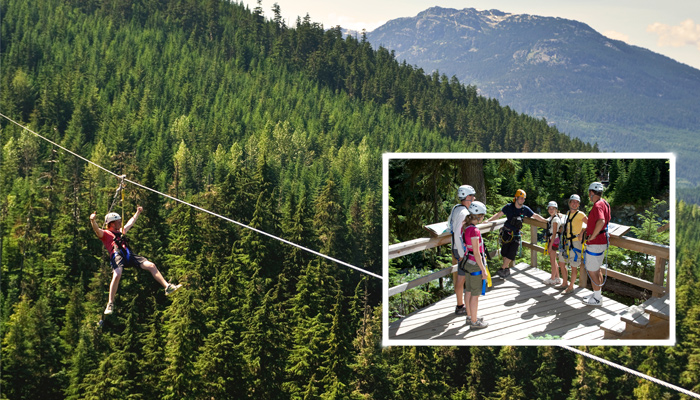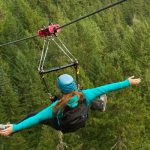Ziplining is the act of sliding down a taut cable using a harness and a pulley. Whistler has two zipline operations, including the first to be built in North America. Using only the forces of gravity zipline participants can reach speeds up to 100 KM/hour while sliding through or over Whistler’s incredible rainforest. In this two-part series Whistler Insider editor Feet Banks trys out both of Whistler’s Zipline tours.

Ziptrek Ecotours pioneered North America’s first zipline adventures way back in 2002 and have since sent over a million guests out into thin air. With 11 ziplines tucked into the ancient rainforest between Whistler and Blackcomb Mountains the crew at Ziptrek just completed their longest and highest line to date, a 731-meter line that stretches from mid-mountain on Whistler back to the original course site on Blackcomb. This allows Eagle tour guests to start and finish right in Whistler Village with no need for shuttles.
That’s noteworthy because Ziptrek builds on the excitement of ziplining with a strong environmental and education ethos: using less shuttles is one way they plan to lower their carbon footprint. “When people get out for a fun, exciting activity like ziplining it puts them in a perfect head-space to learn more about the natural world around them,” says Ziptrek’s Warrick Hubbard. “So many of our guests come for the thrill of the ziplines but then the eco and nature stuff is what really sticks with them afterwards.”
Whistler Insider editor Feet Banks was lucky enough to try out the newest Ziptrek line on an Eagle tour. He came back with these notes and observations.

Illustrations by Dave Barnes
Take a look at this cool video from Ziptrek Ecotours and be sure to check out Part One of Feet’s Whistler ziplining adventures. You can book your own zipline tour at Whistler.com


